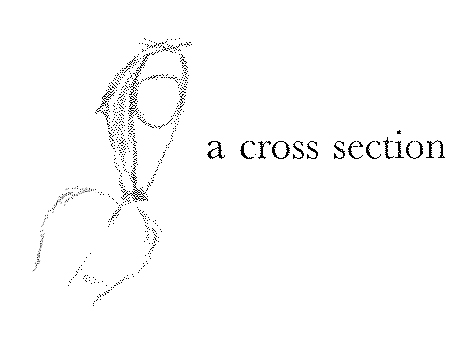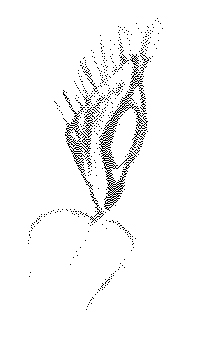From Asa Gray to J. D. Hooker [after 6 July 1867]1
Dear Hooker
Send this letter to Darwin. The doings of Dionæa will delight him, and he will probably have suggestions of good experiments for Canby2 to make. A. G.
[Enclosure]
Wilmington [Del.] July 6th 1867 Dear Dr. Gray,
Dr. Engelmann has sent me the sheets of the new ed. of Manual containing descriptions of Isoetes et seq., and I was surprized to find there “Thermopsis mollis”. If I really wrote that I had found this plant near “Franklin, Va.”, it was a gross slip of the pen, as the species I had in my mind was what I take for Baptisia villosa, Ell. a common sand barren plant further south. To make the matter sure, I send a specimen collected a few miles over in N. C. and which is the same I saw near Franklin. I hope it may not be too late to make the correction, I feel great regret & shame that my carelessness should have caused this mistake.3
The little Dionaea has become exceedingly interesting to me, & I have been making some experiments with a view to test its carniverous propensities.4 On June 7th I got some raw beef and placed fragments in several of the leaves; some of these were so weak from the moving that they had lost their sensitiveness, and did not well close up on the beef. Two however did so. In one on the 9th the beef was partly dissolved, and a drop of the reddish matter resulting, hung from the lower part of the trap. This is the only instance I have seen of any fluid escaping from the leaf. Generally the leaf seems to absorb the whole. I attribute this to the meat having been dissolved with unusual rapidity. On June 18th only 11 days after the leaf was fed, the beef was entirely dissolved and apparantly absorbed by the leaf, nothing remaining but a very faint and almost imperceptable film of (perhaps) indigestable matter. The other leaf with beef, and still others with flies and other insects in, (one caught a centipede), acted in the same way but more slowly. A healthy leaf never “lets up” on any thing it has caught but retains it until it is completely digested, except the wings and horny parts of insects; and when it has finished its meal it opens, but its sensitiveness is gone and it catches no more game. In fact from what I have observed the leaf acts as a stomach, secreting a sort of gastric fluid, dissolving the food, and apparantly absorbing the resulting matter. In one leaf I placed a piece of cheese. This was partly dissolved but it was evidently not the food nature intended,—as the leaf after going through a considerable part of the operation of digestion, became sick and finally died, not however affecting the general health of the plant.
Most of the large leaves of my plants are now dead, but young ones are coming on and the plants look healthy. I have not the chemical knowledge necessary to test these matters thoroughly, nor even sufficient practice with the microscope, to examine the leaves with a view to determine whether there are any absorbent vessels. I cannot ascribe the disappearance of the leaf-food to decomposition, but a little muriatic acid will test this. You may have observed that when the leaf first closes, it does so somewhat loosely as I have attempted to show, thus;—
 but in a little while it closes tight around the food, pressing against every part of it so that the ouline of the substance contained, may be seen on the outside of the leaf. The cross section of the leaf then appears somewhat thus;—
but in a little while it closes tight around the food, pressing against every part of it so that the ouline of the substance contained, may be seen on the outside of the leaf. The cross section of the leaf then appears somewhat thus;—
 this pressure forces the outer edges of the leaf open and the fringes stand erect.
this pressure forces the outer edges of the leaf open and the fringes stand erect.
I wish someone would take hold of this who was fully able to elaborate it. I would gladly aid all I can in furnishing specimens, &c. At the same time the leaves of Sarracenia should be examined to see if there is not something analagous in their drowning of insects.
The enclosed specimen of Aira caryophyllea, I found the other day at Salem, N.J.
CD annotations
Footnotes
Bibliography
Correspondence: The correspondence of Charles Darwin. Edited by Frederick Burkhardt et al. 29 vols to date. Cambridge: Cambridge University Press. 1985–.
Insectivorous plants. By Charles Darwin. London: John Murray. 1875.
Variation: The variation of animals and plants under domestication. By Charles Darwin. 2 vols. London: John Murray. 1868.
Summary
Sends W. M. Canby’s observations on the carnivorous powers of Dionaea. [See Insectivorous plants, pp. 301, 310, 313.]
Letter details
- Letter no.
- DCP-LETT-5580
- From
- Asa Gray
- To
- Joseph Dalton Hooker
- Sent from
- unstated
- Source of text
- DAR 58.1: 16–17
- Physical description
- ALS 1p, encl ALS 6pp † (by CD)
Please cite as
Darwin Correspondence Project, “Letter no. 5580,” accessed on 19 April 2024, https://www.darwinproject.ac.uk/letter/?docId=letters/DCP-LETT-5580.xml
Also published in The Correspondence of Charles Darwin, vol. 15


